Matthew Twyford explained the visual effects work done by Framestore on Thor: Love and Thunder in 2022. Following that, he participated in the VFX work on Tár and Loki.
How did you and Framestore get involved on this show?
We had previously worked with the VFX Producer Lisa Marra on Thor: Love and Thunder and were keen to join forces again on another huge Marvel show.
How was the collaboration with Director Shawn Levy and VFX Supervisor Swen Gilberg?
There was a long established trust between Shawn and Swen, and it was great to see the VFX team so actively involved in the filmmaking process. This trust in the VFX team spread out to the vendors and it created an atmosphere where we were comfortably showing creative ideas directly from the artists and seeing them presented to the Director and Producers. Most of the team are, of course, Marvel fans and aficionados and it engaged everyone to feel they had a meaningful impact on the film.
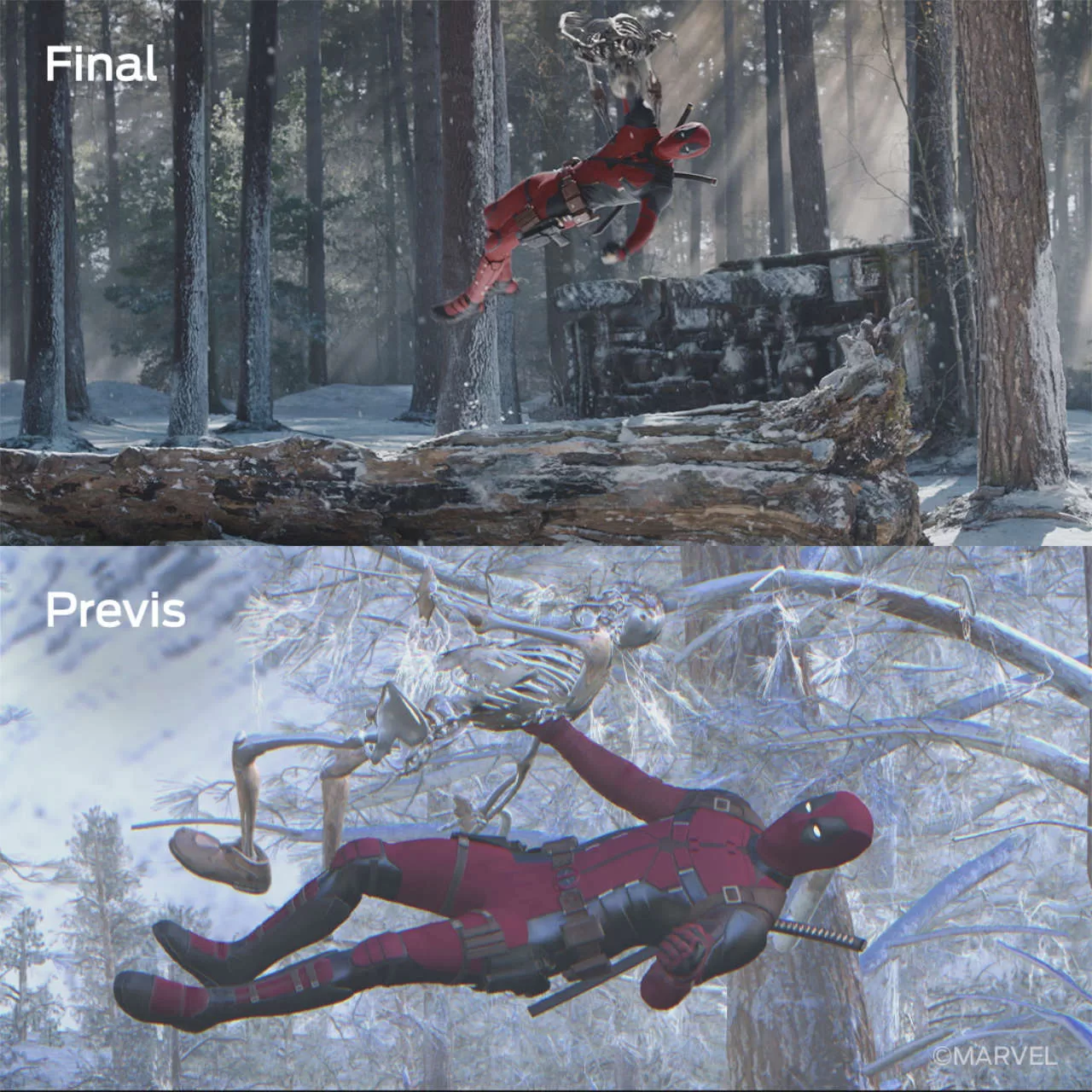
How did you organize the work with your VFX Producer?
For us it was a multi-site show with sequences in London, Vancouver, Mumbai and Melbourne. We were lucky to be able to split tasks between multiple Supervisors and Producers as the work was generally quite complicated, with many specific tasks per shot. Having a direct creative and pipeline link with the FPS (Framestore Pre-Production Services, delivering pre-vis and post-viz) team meant we had excellent visibility upstream, which made our preparation efficient. The impact of the actors and writers strikes meant we were always running on a tighter deadline than normal, but splitting the tasks and responsibilities allowed us time to add the extra quality we wanted.
What are the sequences made by Framestore?
We shared the Cold Opener and Logan’s grave sequence with a title design vendor. Then the entire Subway sequence in the City Streets environment including the Oner and Deadpool variant corps. Then we finished up with the Time Ripper sequence.
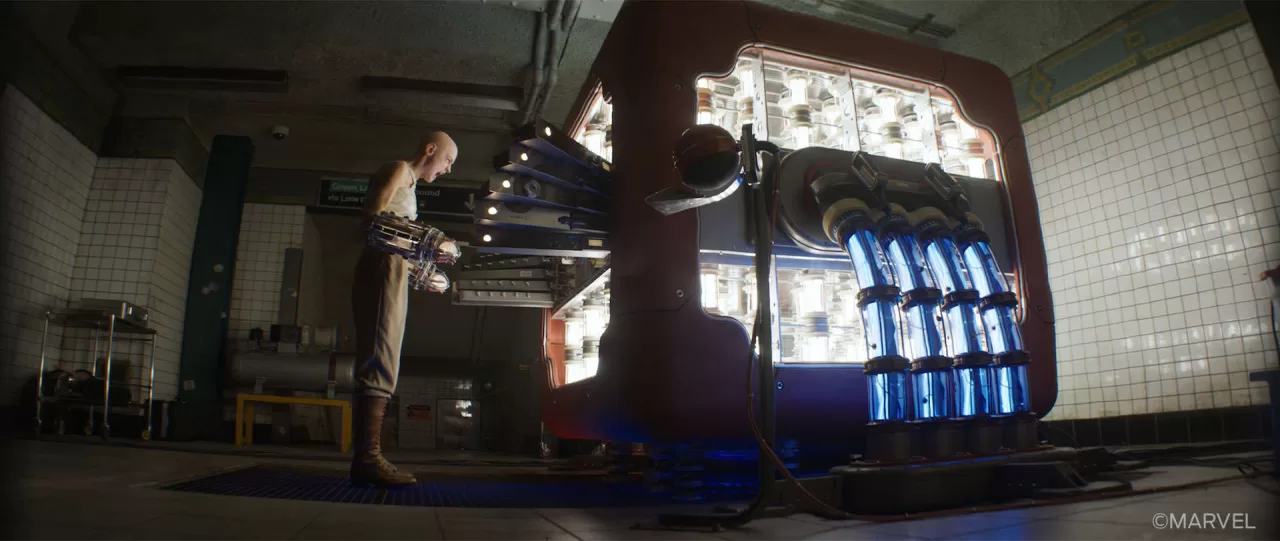
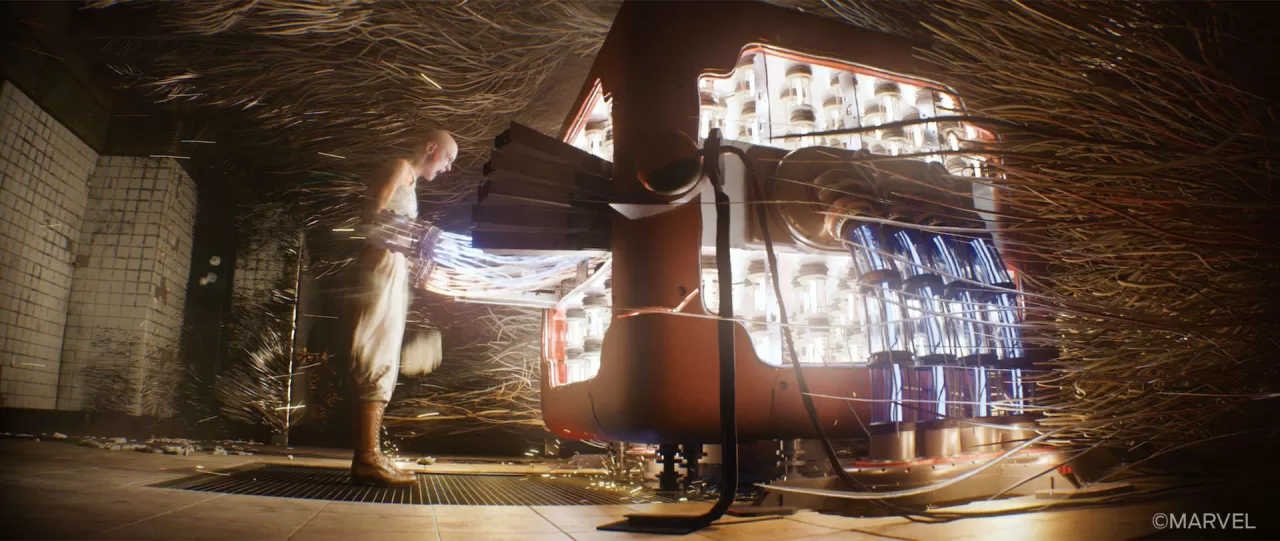
What challenges did the team face when designing and creating the opening sequence?
In terms of VFX the main challenges were the blood simulations. The blood needed to integrate with the environment, props and all the characters. Warm blood dropping onto snow and spraying over both Deadpool and the TVA MinuteMen meant a lot of accurate body tracking. Large sections of the MinuteMen were updated with ongoing continuity damage and some were completely digital doubles.
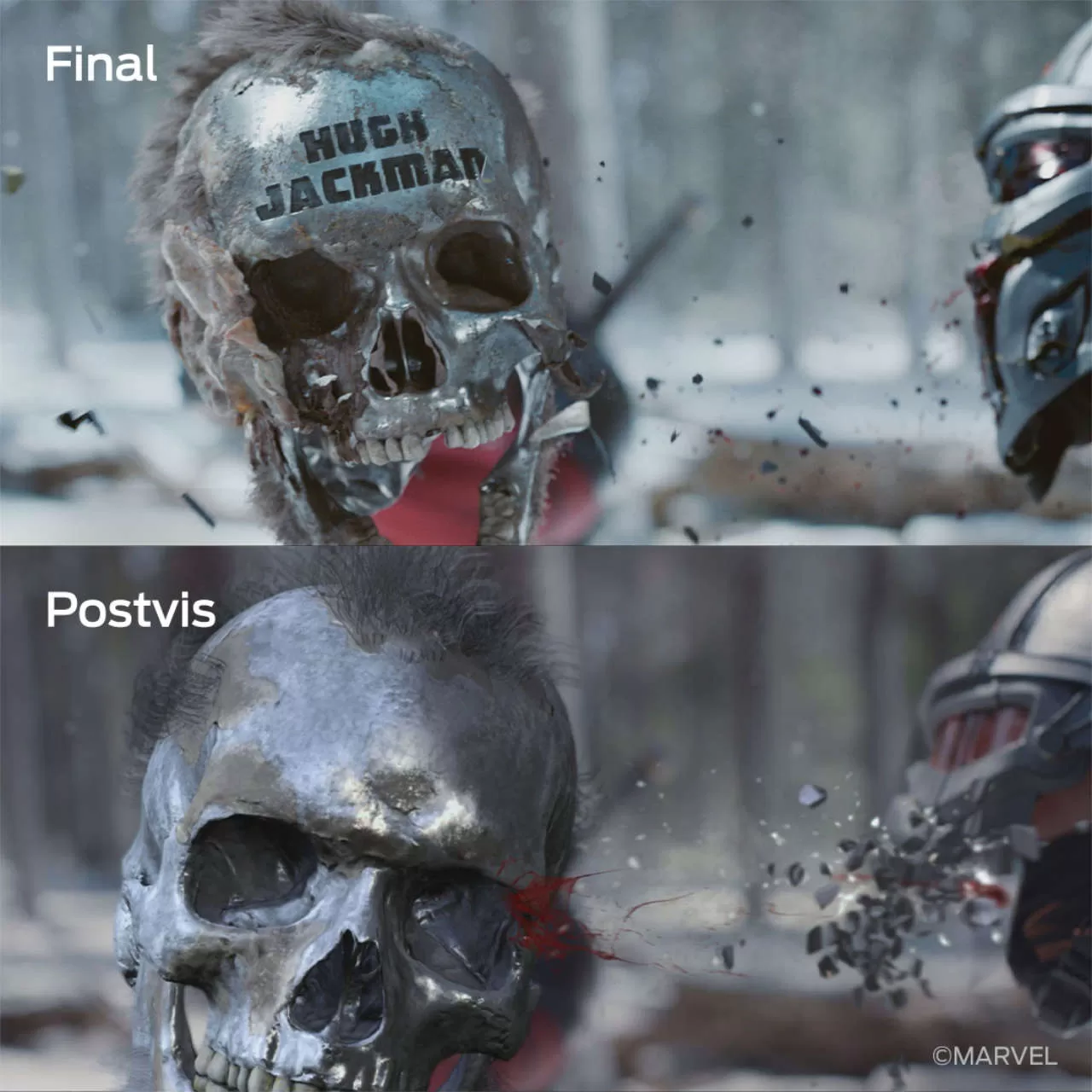
How were practical effects integrated with digital effects in the gore scenes?
For most of our sequences the gore was entirely CG with SFX focusing on the environment (snow and haze) and the rigs for the cameras and stunts.
Can you describe the collaboration process between the VFX and stunt teams?
Safety was the main priority for these extremely complicated stunts. The collaboration with the stunt team and wardrobe was mostly to minimise any potential for injuries by adding CG versions of Katanas, holsters and handguns in post. We also added most of the Deadpool eye patches as they severely limited visibility, and the stunt team needed the extra peripheral vision working amongst so many simultaneous fights. There was plenty of wire, rig and matt removal for the paint and roto team to showcase their talents.
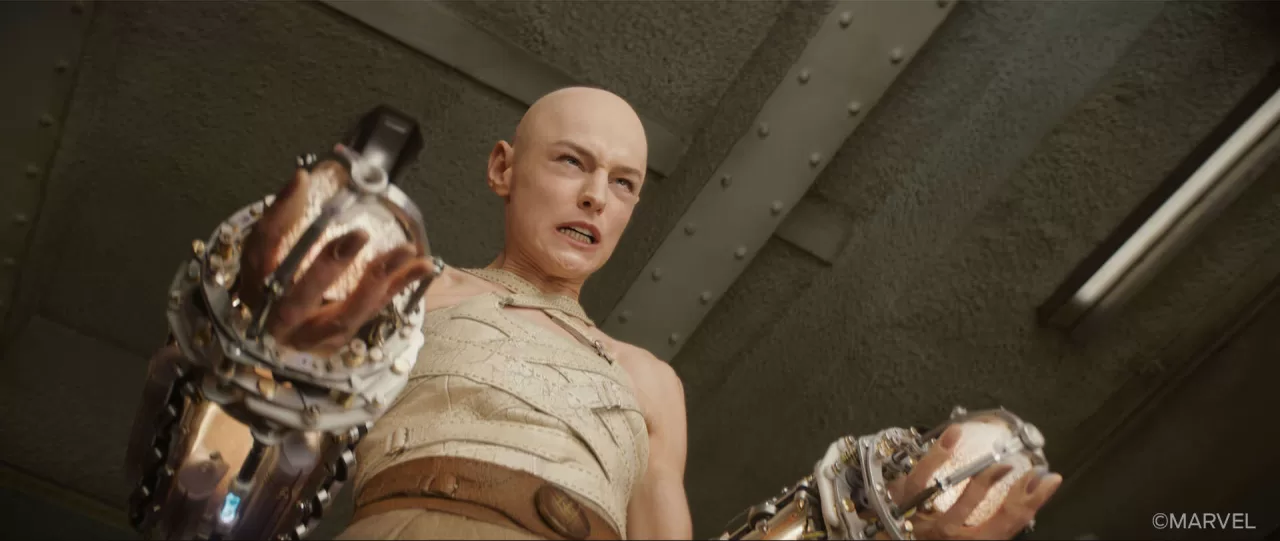

How did your team recreate the New York City inspired environment for the film?
The huge set covered a full block and we knew we would be looking down every street at some point across multiple sequences. We followed a plan from the Art Department for the next few blocks out and then generated more of the city beyond that. The far horizon was a full 360 degree digital matte painting. Once the general layout was in place we added infrastructure and a harbour and then textured to match our wet down look from the shoot. All the windows, shops and streets were then rigged for nighttime lighting as well.
Were there any real locations used for reference?
We used a lot of feel, look and dressing cues from Stanton Street, Lower East Side, New York.
How was the lighting designed to enhance the New York environments?
Shooting set exteriors in London during mid winter across many weeks gives you quite a few lighting variations! On set the lighting was controlled to give a flat even look but we found when we rolled that out into the city extensions it looked incredibly dull and gloomy. To give us some contrast and punch to the images we added a watery sunlight to the distant city and digital set extensions playing the shots with a higher contrast while keeping the foreground action in the shaded areas.
How were crowd scenes in New York populated with digital characters?
All the crowds were bluescreen live action elements shot specifically for the action, angles and costumes needed for the sequences. We then used a Nuke particle rig that we designed for Loki S2 to populate the streets taking into account the geometry. Cars, trains, vans and buses were all digital assets to match the on set vehicles.
How was the continuous shot filled with multiple Deadpools achieved?
The ‘Oner’ used pretty much every stunt, SFX and VFX trick in the book. After months of preparation with the stunt team and FPS previs we shot the sequence as four distinct motion control sections of a single long pass. For each section there were 20-30 stuntmen and women in a carefully choreographed routine with every fall, dead body and flying exit blended into the next section where the stunts would reset and go with routine 2 and so on. For each section there were multiple wires and rigs for specific stunts. We shot over 80 passes in all covering SFX pyro, props, clean plates, additional characters, damage and breakaways. We then threaded into the action new CG characters, blood, and stunts to keep the relentless pace from flagging and keep continuity cues with the rest of the sequence edit.
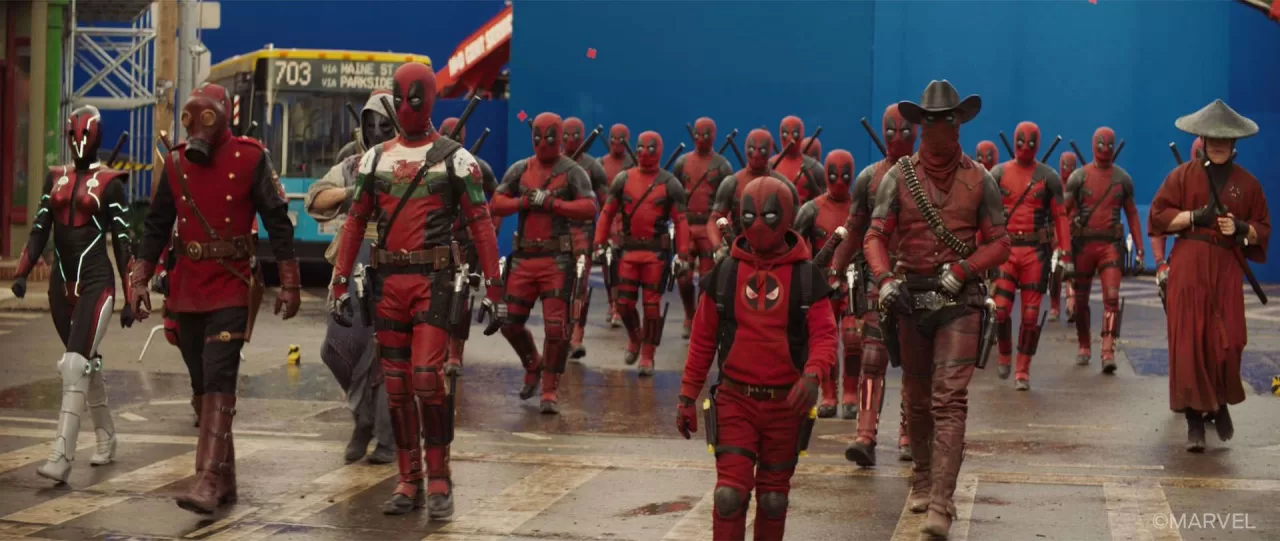
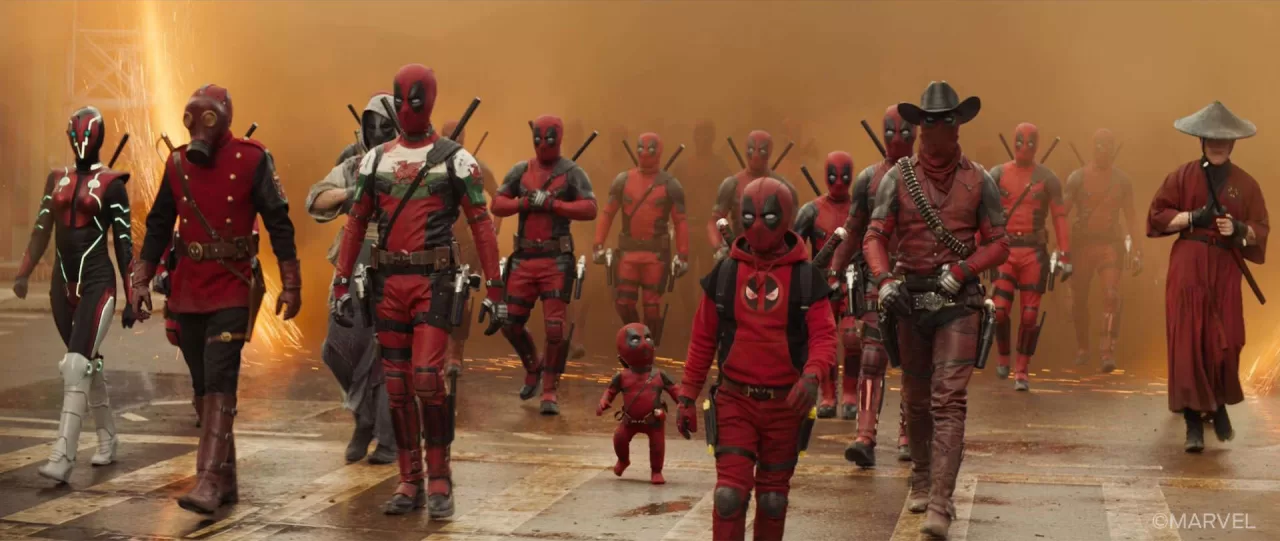
How did you create the various versions of Deadpool?
We had built Deadpool and Wolverine digital doubles and we knew we might need alternates early on, so we rigged our assets with random size and colour controls. We then modelled and textured to match all the damage alternatives seen throughout the show. This gave us the base for all the ‘Duplicates’ that look mostly like our hero Deadpool. During the last day of shooting costumes came up with more ‘Variants’ for the bluescreen crowd shots and everyone loved them so much we built some more digital doubles so we could add them into the sequence where the bluescreen elements could not be used.
Can you tell us more about DogPool?
We created a full digital version of Peggy to cover any missed opportunities in the shoot, but she performed fantastically on set and we had footage for her in every shot including the leaps and jumps. She wore the costume and the booties with no problem and although her time in the film was extended by demand we only used the digi a few times. Having the asset massively helped us when we needed to add the ‘Doggles’ as we had a fully rigged asset with groom and dynamics that matched her perfectly. So in most of her shots she is really there in the plate, but with the ‘Doggles’ and eyes from our digital asset.
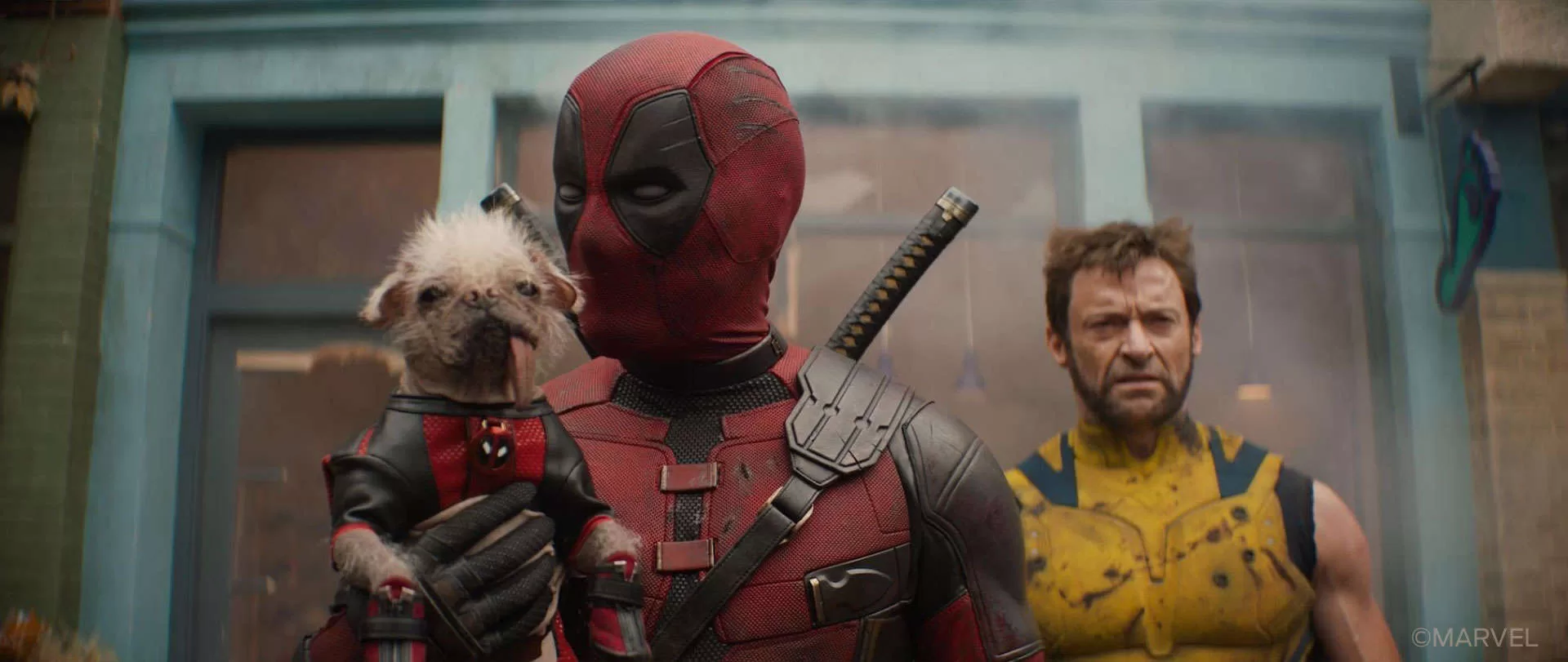
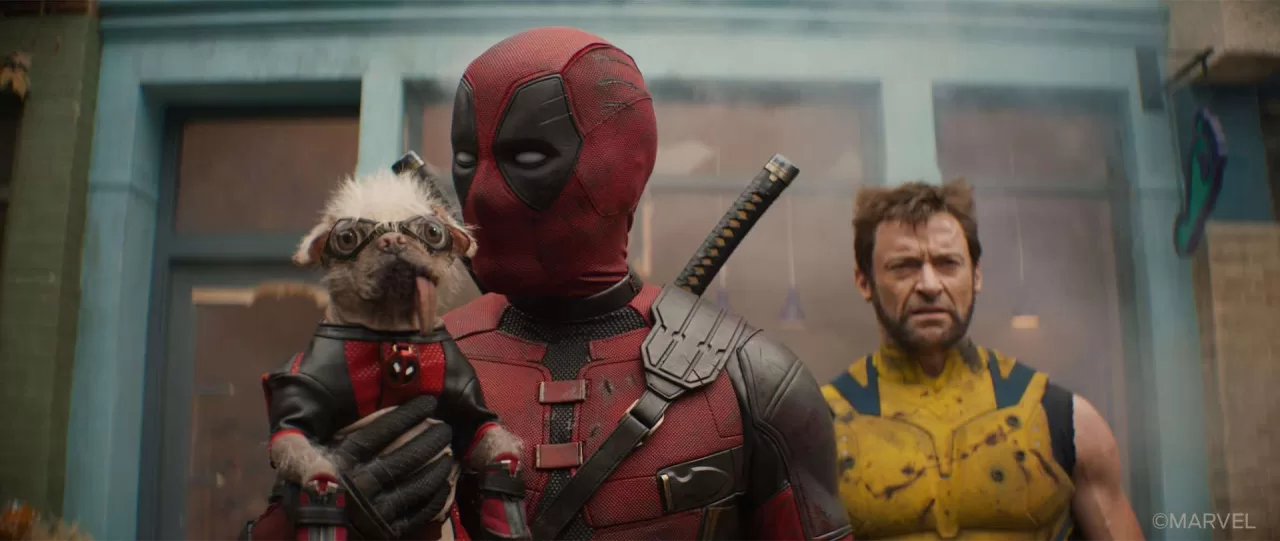
What was the inspiration behind the design of Cassandra’s visual effects?
Cassandra’s mind reading powers were inspired by a comic book frame. Our task was to recreate the effect as a close up, photoreal, extended cut sequence.
Can you explain the process of designing Cassandra’s powers visually?
We approached this as three separate tasks:
Firstly – How to animate Cassandra’s hand to work with the performances in the plate. This was a classic animation task and was led by Jye Skinn and his team in Vancouver. He liaised with the creature team in London to build a custom animation rig that could give control of all the deformations to the animators.
Secondly – What sort of simulations do we want and where? This was much trickier as her hands and fingers react with some things as a physical collision and others as more of an intersection, with transitions between those two types of movement. The creature effects and simulation effects teams nailed this for us bouncing between Maya and Houdini.
Lastly – How to make it look photo real in closeup and not suffer from the uncanny valley issues. This was solved by starting with a very, very good digi double of Matthew Macfayden. Lighting and lookdev pulled out all the stops to make the skin a perfect match to the character, and then went further to develop the dynamic look changes when skin is stretched and creased. Finally, we had some talented modellers do final shot sculpt passes for cleanup and to add more subtle animations referenced from the footage.
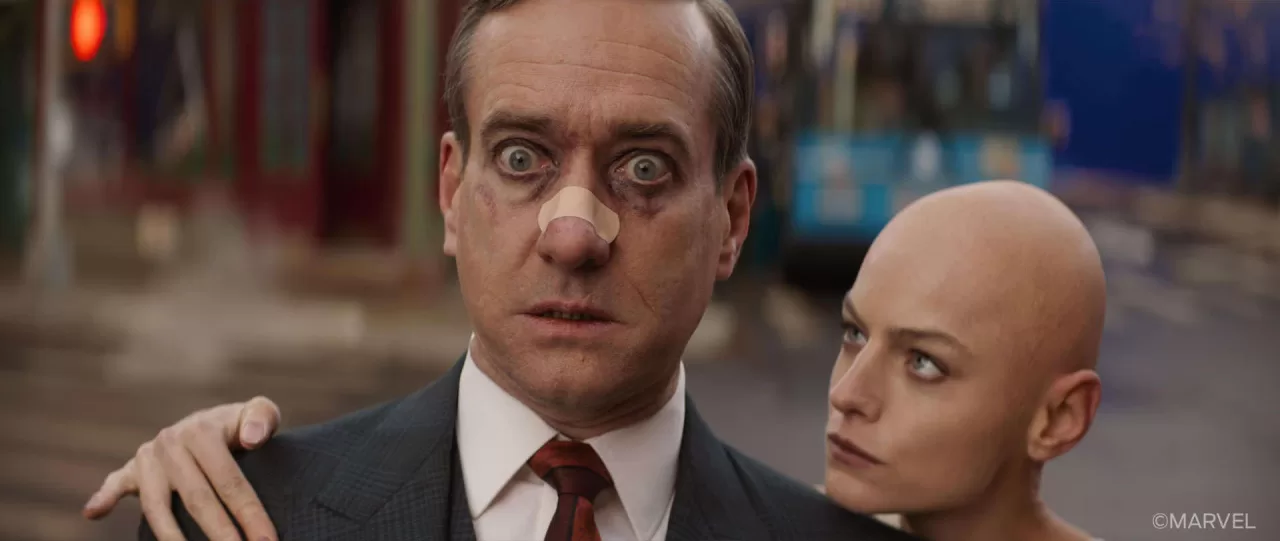

What techniques were used to simulate the atomization of Cassandra?
Cassandra’s atomisation was a developing effect. We ran through a gamut of looks from the gruesome and bloody, to anatomically correct sandblasted face, through atomic particles to full radiation obliteration. Everything was linked back to Emma’s performance and the need to find a balance of violent storytelling and the understanding that she was not recovering from this moment. The final was a mixture of particles (atoms) being stripped from her, mixed with the sandblasted layers of skin peeling away, softened with the plasma glows and internal heat glows that make it a bit less visceral.
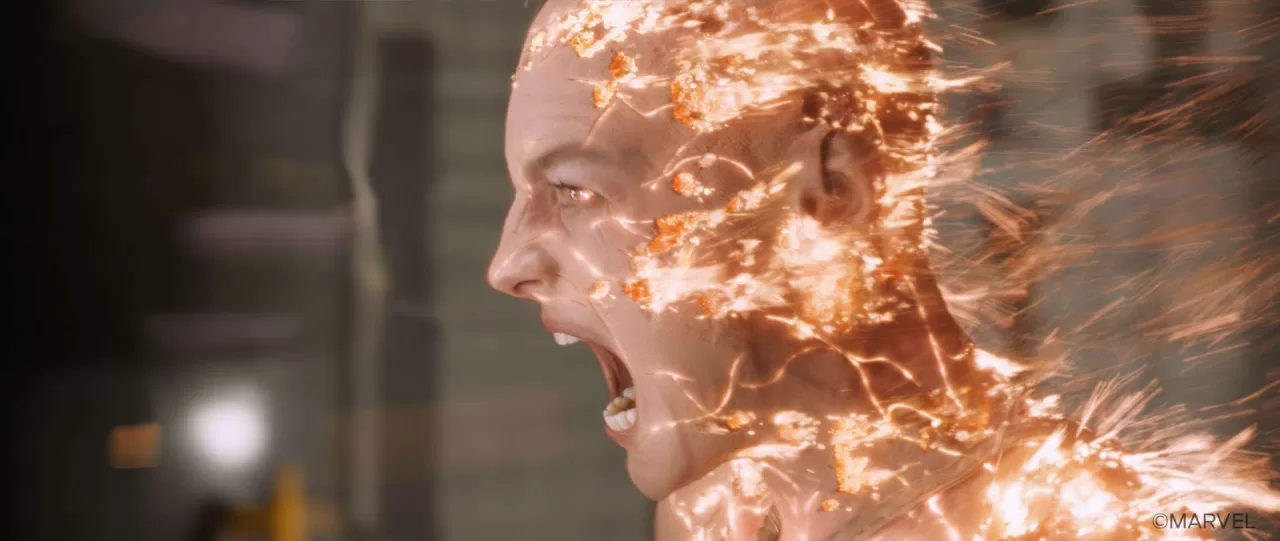
Were there any memorable moments or scenes from the film that you found particularly rewarding or challenging to work on from a visual effects standpoint?
The first time we saw Dogpool’s goggles working well with her magnified eyes was a great moment. I think there was a lot of concern that it may not add value as everyone had been so impressed by Peggy’s performances in front of the camera, and it took a long time to develop the ‘Doggles’. Then we saw the renders working and it brought out so much more of her character, it was such a positive moment for everyone in the VFX teams. Previously her eyes were always occluded by her hair and the VFX animation just brought her into the same space as Ryan and Hugh in terms of her performance.
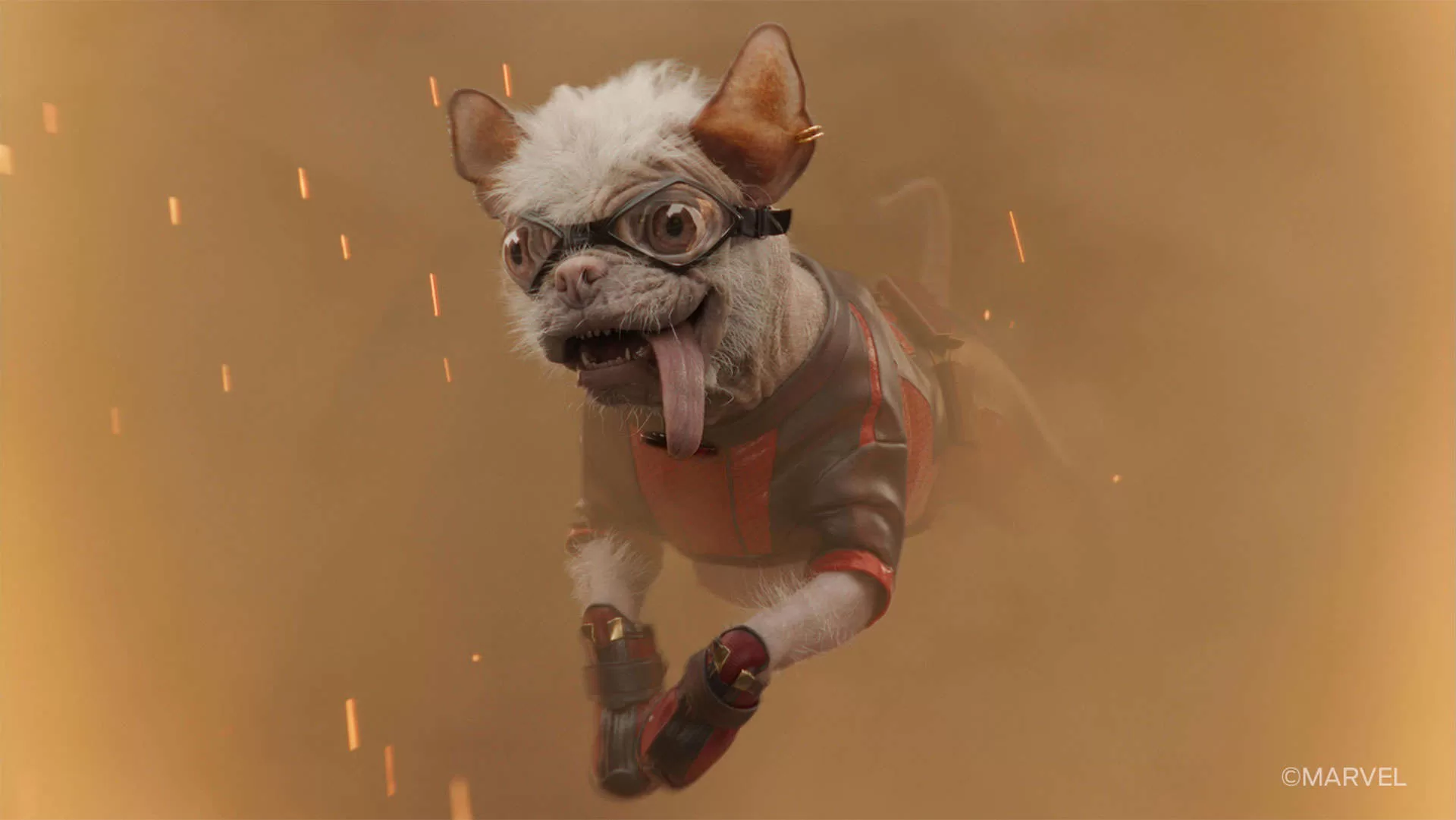
Looking back on the project, what aspects of the visual effects are you most proud of?
For me it would be the Cassandra/Paradox interactions where she ‘rummages’ around inside his head. An extremely tough creative and technical visual effect that I think works so well with the storytelling and cinematography. You really feel Paradox’s discomfort.
Which sequence or shot was the most challenging?
Definitely the ‘Oner’. Over 80 passes of motion control shot outdoors across three weeks of a British winter. This included extremely complicated stunt choreography, extensive special effects and meticulous planning from previs, shooting, postvis and finally VFX. Then there was some incredible rig/mat removal from the paint team, full body tracks on over 90 characters over 6000 frames and intricate stitching of all the passes by the comp team to blend all the multitudinous lighting situations when shooting dawn to dusk over so many days.
Is there something specific that gives you some really short nights?
The sheer amount of tasks needed on the ‘oner’ stunt fight in the Deadpool Corps sequence (around a thousand individual tasks)
What is your favourite shot or sequence?
The sequence where Cassandra pushes her hand and fingers through Paradox’s head in full close up and nowhere to hide detail. We hoped to really make the audience squirm as if they were experiencing this themselves.
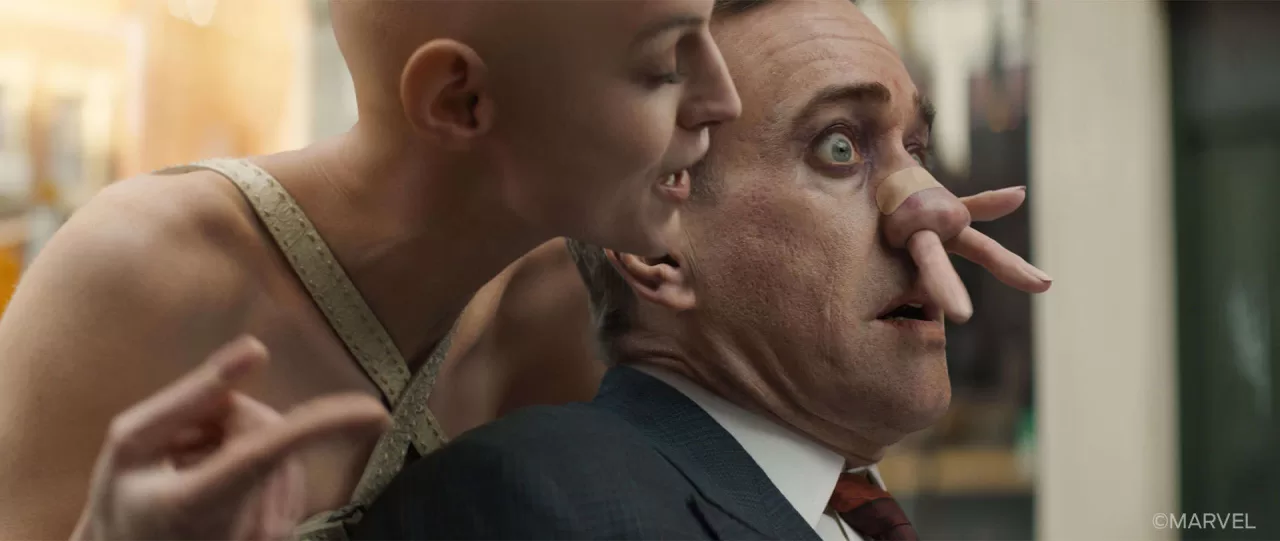
What is your best memory on this show?
Presenting DogPool in her new ‘Doggles’ for the first time to the Marvel Studios team, and getting such a huge positive reaction.
How long have you worked on this show?
15 months.
What’s the VFX shots count?
Framestore’s VFX teams worked on around 400 shots in the final film.
A big thanks for your time.
WANT TO KNOW MORE?
Framestore: Dedicated page about Deadpool & Wolverine on Framestore website.
© Vincent Frei – The Art of VFX – 2024




